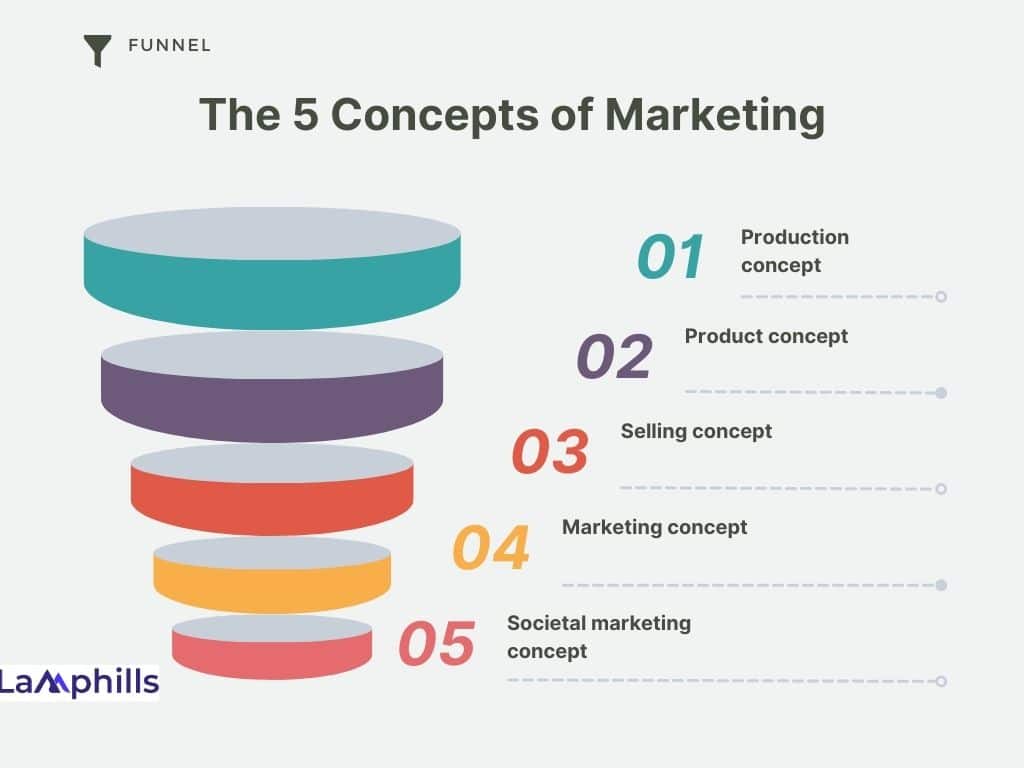Picture this: sitting in your favorite coffee shop sipping on a caramel macchiato while staring at the busy streets and noticing the bright signs of different brands. You just couldn’t help but notice how some brands made you feel excited, while others were just, well, in the background. That’s when it hits you—the concepts behind it all. Conceptual marketing is that magic sauce that makes ordinary products into must-haves. So, what is conceptual marketing, and how does it help businesses create potent brand ideas? In this interactive blog post, I will show you what is conceptual marketing and also walk you through a guide to building strong brand ideas.
Let’s dive in!
Key Points
- Conceptual marketing focuses on conveying a brand’s ideas and values rather than just selling products. It aims to establish an emotional connection with consumers, making the brand memorable and desirable, as seen in examples like Nike and Apple.
- Successful conceptual marketing involves emotional connection, unique value propositions, storytelling, strong visual identity, and consumer engagement. These elements help differentiate a brand and foster loyalty among customers.
- To effectively implement conceptual marketing, brands should identify their core values, understand their target audience, create interesting brand stories, design impactful visuals, and maintain consistent messaging across all platforms.
Conceptual Marketing?
Conceptual marketing is a technique that emphasizes a brand’s ideas and concepts instead of just its products. Instead of selling its products, brands can use conceptual marketing to represent more of a message that appeals on a personal level to its target audience. Conceptual marketing invites consumers to associate emotionally with a brand and, therefore, finds it both memorable and desirable.
See: Brand Licensing Done Right: From Concept to Consumer
Take Nike, for example. They are not just selling shoes; they sell an idea of athleticism and the belief that anyone can “Just Do It.” It is in this powerful concept that people take motivation to face one’s best and stretch to their full potential.
The core of conceptual marketing lies in ideas about the brand and feelings evoked by the brand rather than just the products or the features of the brand. In other words, it is not about what it sells, but about the impact and message on top of it. The ultimate objective is to evolve an emotional connection with customers, building loyalty and resonance that has them repeatedly coming back.
Another instance is Apple—it’s not just about their gadgets; it’s about thinking differently—a call for creativity and individuality that resonates with millions. Brands like Apple flourish because they focus on ideas apart from their products that stick in the minds of their consumers.
Key Elements of Conceptual Marketing
#1. Emotional Connection

Conceptual marketing establishes an emotional connection between the brand and the audience. When customers are connected, they are certainly to be loyal advocates.
#2. Unique Value Proposition
Through conceptual marketing strategy, one can know what separates their brand from the rest. This becomes the selling point that attracts consumers and differentiates the brand from others.
#3. Storytelling
Brands use stories to communicate their ideas. A good story only fascinates consumers and creates the ability to relate with the brand on a personal level.
#4. Visual Identity
In a concept sale, logos, colors, and typography associated with a brand have much more significance. It communicates and portrays the personality and message of your brand.
The visuals seek the attention of the brand’s message in an instant.
For example, the striking red and white in Coca-Cola reflect fun and bring people together.
#5. Engaging and Interacting

Conceptual marketing is not a one-way thing; brands should ensure that the consumer is involved with them by creating a community that increases brand loyalty. Brainstorm with your team to create interesting ideas for effective marketing
How to Implement Conceptual Marketing
#1. Identify Your Brand Core Values
First, make it clear what your brand represents—what values you want to convey to your target audience.
What is particular to your brand that makes it unique? Ask yourself questions like:
- What do we stand for?
- What impact would we like to have?
Example: For Patagonia, the core concept revolves around environmental responsibility. This dedication resonates with environmentally conscious consumers.
#2. Know Your Audience
Make sure to know who the audience that your message is targeting is. Do some research on what they like, value, or need. The better you understand your audience, the better you can tailor your concept to match their needs.
| Research Methods | Purpose |
| Surveys | Gather broad audience insights |
| Focus Groups | Explore specific attitudes |
| Social Listening | Track consumer sentiments online |
Ask for feedback; ask for interaction. Respond to comments and messages in order to establish some sort of community around your brand. Knowing who your audience is and what interests them will allow you to develop a concept that will resonate with them. Do your research among your audience through questionnaires and focus groups to learn as much about them as possible.
#3. Create a Compelling Brand Story
Create a meaningful narrative that captures all the values and missions of your brand in one go. It should resonate with your audience and provoke emotions in them. Brands have to define what they stand for. For instance, Nike draws its core values from empowerment and determination. “Just Do It” is something more than a slogan; it’s a way of living.
#4. Design Creative Visuals
Draw the logo and graphics based on your brand concept. Make sure these reflect the emotions you are trying to convey.
#5. Consistent Messaging
Messaging must be consistent through every touchpoint, be it digital media, advertising, or product labels.
Why Conceptual Marketing Matters
In a competitive marketplace today, choices are being thrust at consumers from every direction. Conceptual marketing presents a brand with an interesting identity speaking to your audience. As one of the most quoted lines by Simon Sinek incorporates, and I quote
“People don’t buy what you do; they buy why you do it.”
Blending this communication of the ‘why’ behind your brand, you will garner customers who share similar values as yours.
Conceptual marketing matters because it:
- Creates emotional linkage: Consumers are more attached to brands that share their values.
- Differentiates from competitors: A unique concept makes a brand stand out.
- Drives long-term loyalty: People aligning with a brand’s purpose are more likely to stay.
Tips for Crafting a Successful Conceptual Marketing Strategy
- Use emotional triggers: Connect on a deeper level with your audience. Be Authentic: The concept should genuinely reflect the brand’s core values.
- Encourage participation: Build a community where consumers can engage with the brand.
- Monitor feedback: Employ analytics and customer responses to measure the effectiveness of your idea and make necessary adjustments as called for.
Pro Tip: Make It Interactive Encourage user-generated content where customers would share stories or photos aligning with your concept. This helps in the building of loyalty and organic engagement.
Here’s a detailed checklist template to help brands craft a successful conceptual marketing strategy tailored to their audience.
A short story of how I used conceptual marketing as a startup
There were just the three of us in our tiny apartment four years ago: Jack, Richie, and I. We had big dreams and a thimbleful of coffee to keep us going. Lo and behold, we planned this stroke of genius, or so we imagined at that particular moment in time. We wanted to create a brand but did not want to be in the business of merely peddling objects that would simply be bought and forgotten. So, we sat down with an oversized whiteboard, which was probably the only thing bigger than our ambitions, and came up with what I called “conceptual marketing.”
“Why don’t we just tell a story instead of trying to sell things?” I chipped out as Jack spilled coffee all over his jeans while vigorously bobbing his head.
Our goal?
To create an identity, an experience that people could relate to. With that, we focused our brand on the principle of celebrating every small win—which we were sure would be popular. And that’s how we did it: we did not sell the product but instead sold an idea that was familiar with everyone.
Of course, it is crucial to point out that every process in the world is not perfect and things do not always go perfect in every situation. Richie insisted we try ‘mood boards’ that looked like a class project in kindergarten, while Jack’s ‘relatable marketing’ became daily posts with photos of his dog and short comments that were not related to marketing at all. However, it did not take long to realize that we needed to change our approaches, and this we did. By sharing little moments, encouraging community loyalty, and laughing at ourselves along the way, we built a strong brand that people loved.
Key Lesson
It was not only about selling products and services to the consumers, but about making them feel comfortable where they are. And even now, every time a new follower reacts to our post and shares their ‘win’—I recall those nights filled with laughter, coffee spills, and heavy brainstorming. That, my friends, is the wonder of conceptual marketing—something which I would not have bartered for all the crisp and shiny advertisements out there in the world.
What Is Conceptual Marketing?
Conceptual marketing is the practice of using data in marketing to generate strategies that are centered on the wants and goals of consumers. Marketing concepts are marketing strategies that give you a variety of ways to interact with your target audience.
What Are the 5 Concepts of Marketing?

The production concept, product concept, selling concept, marketing concept, and societal marketing concept are the five marketing concepts.
What Are the 4 P’s of Marketing?
It is common to refer to the four Ps of marketing—product, pricing, place, and promotion—as the marketing mix. These are the main components of product or service planning and marketing, and they have a lot of interactions with one another.
Watch the video below to see the 4 P’s of marketing and their examples
What Are the Marketing Concept Examples?
Marketing Concept: Examples of the marketing concept include regionally specific food menu items, internet shopping, doorstep delivery, and custom-made furniture. These tactics center on the requirements and desires of the client.
Conclusion
Conceptual marketing, therefore, is the art of creating big brand ideas that touch their consumers at a deeper level. Through emotional connections, unique values, and absorbing storytelling, brands can make themselves remarkable and cultivate loyalty. Let’s remember that every great brand has something to say, which now depends on how you tell your story.
Keep these concepts in mind as you now start your journey of branding. If you have followed each cue carefully after reading this article, you will be well on your way to creating a brand that does more than sells: it inspires. Thanks for reading to the end; now go out there and make your brand shine!
Recommended Posts
- Understanding the Concept of Branding vs. Marketing vs. Sales
- How to Do Competitor Analysis in Digital Marketing: A Step-by-Step Guide
- B2B Content Marketing Services: Choosing the Right Fit for Your Business
- Mastering Brand Identity Design: Strategies to Define and Elevate Your Brand






